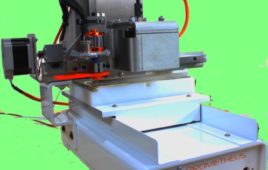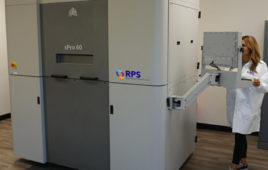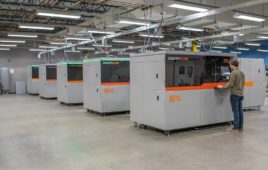For most designers and engineers, a great product prototype can be worth its weight in gold. Producing your design in 3D, testing its functionality, and ensuring that it can be manufactured to exacting specifications can save considerable time and money throughout product development and production processes.
More than 20 years ago, Roland developed subtractive rapid prototyping (SRP) technology to simplify these processes. Today, SRP is the foundation for the company’s 3D mills, including the MDX series, which is widely used for product prototyping and short-run production.
While the technology is known throughout the industry, there are still aspects of it that come as a surprise to many. Additive technologies have stolen the headlines lately, but if you are in the market for a prototyping system, here are few things you should know:
1. SRP Systems Are Easy-to-Use
It’s true that when first introduced, SRP systems required the user to write code for the CNC program –
a time consuming task that required both precision and technical expertise. In fact, one wrong line of code could alter the production process for a given part, leading to costly delays, wasted materials, and frustration.
Today, G-Code programming for SRP systems is largely a thing of the past. Instead, Roland bundles its MDX mills with CAM software that is wizard-based and features an intuitive interface. With an MDX, the user can export design files in STL, IGES, 3DM, and 3D DXF formats directly from a CAD program into the CAM software. The software then walks the user through every step of the job, determining the appropriate tool to use, the milling speed and depth, and how fast the tool should turn according to the material selected. With this system, users get full CNC functionality without the complexity of CNC programming.
2. SRP Systems Are Affordable
SRP systems are priced affordably – and are also more affordable to operate than additive systems. This is because of the higher material costs and maintenance contracts associated with additive technologies. Over time, an SRP system pays for itself much faster than a comparable additive system.
3. Wide Range of Materials
Additive technologies typically support a limited range of materials, and some only support a single material that is proprietary to the machine. By contrast, SRP mills process a range of materials, including ABS, acrylic, aluminum, chemical woods, plaster, styrene, Acetal, Nylon, and FDA approved plastics.
4. Fit & Finish Are Unrivaled
SRP technology is effective for intricate applications. The software and hardware components work together for precise, repeatable results with much smoother surface finishes and tighter tolerances than additive methods can achieve. This is because additive systems lay down materials in layers and the tolerances are determined by the thickness of these layers.
5. Proof of Manufacturing
Prototyping in one material and then manufacturing in another, as additive systems do, poses the risk that the part will not perform as expected. While some additive technologies support thermoplastics, few support aluminum, which is commonly used in manufacturing molds, products, and parts.
The ability of an SRP system to mill end materials allows users to more accurately verify the functionality of the part; test for fit, finish, and product durability; and conduct structural, thermal, and electrical testing.
Also consider that SRP systems mill away excess material from a solid substrate, much like a CNC machine. This technique is similar to actual manufacturing processes, and allows users to ensure that tool paths and other aspects of manufacturing can be completed in production.
6. Versatility
SRP technology can handle a multitude of projects on one device; producing everything from PCB boards to engravings, and also completing post-manufacturing work such as drilling holes or surface milling.
You can even use an SRP mill for rapid custom manufacturing (RCM). For example, SRP technology plays a critical role for one customer in the orthopedic industry by quickly manufacturing custom spinal implants used in spine fusion surgeries. Each part is manufactured for a specific patient.
7. Room for Both Technologies
While subtractive technologies provide benefits to the designer and engineer, so do additive technologies. In fact, while subtractive devices provide a greater degree of accuracy in terms of fit and finish, additive systems can yield more structural complexity by allowing you to use layers for parts of an object that the milling tool simply can’t reach. In the end, having a variety of tools in your shop will open up your creative options, bring forth more precise, functional prototypes, and improve both the cost effectiveness and efficiency of the manufacturing process.
For more information on Roland SRP technology, visit www.rolanddga.com/products/milling.
Filed Under: Rapid prototyping




